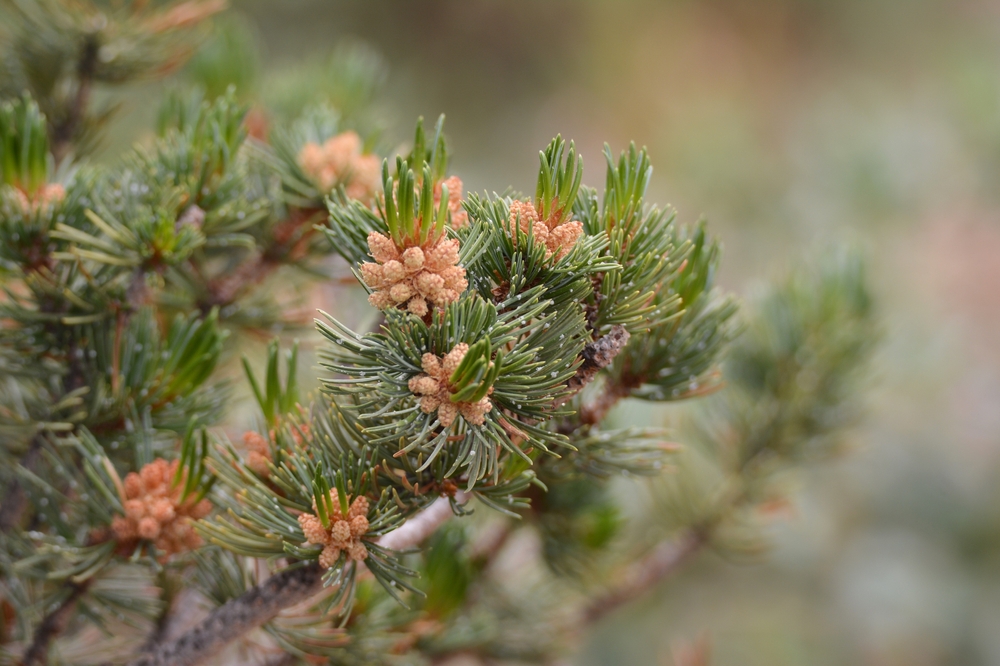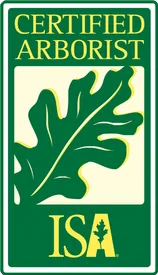

As urbanization continues to spread, creating and preserving spaces for wildlife within cities becomes increasingly important. Loveland, Colorado, with its unique blend of urban and natural environments, offers an ideal setting to explore the potential of using local tree varieties to enhance urban wildlife habitats. By focusing on native species, residents and city planners can support local ecosystems, foster biodiversity, and create a greener, more sustainable city.
The Importance of Urban Wildlife Habitats in Loveland, CO
Urban wildlife habitats play a crucial role in maintaining biodiversity within city limits. They provide shelter, food, and breeding grounds for various species, from birds and insects to mammals. In Loveland, CO, these habitats are particularly valuable as they contribute to the overall health of the local environment, improve air and water quality, and enhance the well-being of the community.
Benefits of Urban Wildlife Habitats
Urban wildlife habitats offer numerous benefits, including:
- Biodiversity Support: They provide a home for a wide range of species, ensuring that urban areas remain ecologically balanced.
- Pollination: Many urban trees and plants rely on pollinators such as bees and butterflies, which in turn need habitats that offer nectar and shelter.
- Climate Regulation: Trees and green spaces help mitigate urban heat islands by providing shade and cooling the air.
- Improved Air Quality: Trees absorb pollutants and produce oxygen, improving air quality for city dwellers.
- Aesthetic and Recreational Value: Green spaces enhance the visual appeal of urban areas and provide residents with places to relax and connect with nature.
Local Tree Varieties in Loveland, CO: A Natural Choice
Choosing the right tree varieties is critical to successfully enhancing urban wildlife habitats. In Loveland, CO, local tree varieties are particularly well-suited to the climate and soil conditions, making them ideal for supporting local wildlife. These trees have evolved alongside local fauna, providing the necessary food and shelter for native species.
Why Local Tree Varieties Matter
Using local tree varieties in urban planning and landscaping has several advantages:
- Adaptation to Local Climate: Native trees are naturally adapted to the local climate, making them more resilient to drought, temperature fluctuations, and pests.
- Support for Native Wildlife: Local tree species provide food, shelter, and breeding sites for native wildlife, helping to sustain local ecosystems.
- Lower Maintenance: Native trees often require less water, fertilizer, and pest control, reducing maintenance costs and environmental impact.
- Cultural and Historical Significance: Many local tree varieties have cultural or historical importance, contributing to the city’s unique identity.
Key Local Tree Varieties for Urban Wildlife Habitats in Loveland, CO
Several local tree varieties are particularly beneficial for enhancing urban wildlife habitats in Loveland, CO. These species are well-adapted to the region’s climate and soil and provide essential resources for local wildlife.
1. Plains Cottonwood (Populus deltoides)
The Plains Cottonwood is one of the most iconic trees in Loveland, CO. This fast-growing tree can reach heights of up to 100 feet and provides excellent shade. Its large, heart-shaped leaves rustle in the wind, creating a soothing sound.
Benefits for Wildlife:
- Bird Habitat: The dense foliage and sturdy branches make it an ideal nesting site for birds such as hawks, owls, and woodpeckers.
- Food Source: The tree produces cottony seeds that are a food source for small mammals and birds.
- Shelter: The bark and branches offer shelter to various insects and small animals.
2. Rocky Mountain Juniper (Juniperus scopulorum)
The Rocky Mountain Juniper is a hardy evergreen tree that thrives in Loveland’s semi-arid climate. It is a slow-growing tree that can live for several hundred years, providing long-term benefits to the ecosystem.
Benefits for Wildlife:
- Year-Round Shelter: Its dense, evergreen foliage offers year-round shelter for birds and small mammals.
- Food Source: The blue-green berries of the Rocky Mountain Juniper are a vital winter food source for birds like cedar waxwings and robins.
- Nesting Sites: The tree’s dense branches provide excellent nesting sites for birds.
3. Gambel Oak (Quercus gambelii)
Gambel Oak is a versatile native tree that can grow as a small tree or large shrub. It is highly adaptable and can thrive in various soil types, making it an excellent choice for urban wildlife habitats in Loveland, CO.
Benefits for Wildlife:
- Acorn Production: The tree produces acorns that are a crucial food source for squirrels, deer, and various bird species.
- Cover and Shelter: Its thick foliage provides cover and shelter for ground-nesting birds and small mammals.
- Erosion Control: The extensive root system of the Gambel Oak helps prevent soil erosion, contributing to the stability of the habitat.
4. Ponderosa Pine (Pinus ponderosa)
The Ponderosa Pine is a majestic native tree that can grow up to 150 feet tall. It is known for its distinctive orange-brown bark and long needles, which give off a pleasant vanilla scent when warmed by the sun.
Benefits for Wildlife:
- Habitat: Ponderosa Pines provide habitat for a wide range of species, including birds, insects, and mammals.
- Food Source: The seeds of the Ponderosa Pine are a critical food source for birds like woodpeckers and crossbills.
- Nesting Sites: The tree’s large branches offer nesting sites for raptors and other large birds.
5. Serviceberry (Amelanchier alnifolia)
Serviceberry is a small, multi-stemmed tree that produces beautiful white flowers in the spring and edible berries in the summer. It is a favorite among gardeners and wildlife alike.
Benefits for Wildlife:
- Pollinator Attraction: The flowers attract a variety of pollinators, including bees and butterflies.
- Berries: The sweet, dark purple berries are a food source for birds, mammals, and even humans.
- Shelter: The dense growth of the Serviceberry provides shelter for small birds and mammals.
Creating and Maintaining Urban Wildlife Habitats in Loveland, CO
Enhancing urban wildlife habitats in Loveland, CO, involves more than just planting trees. It requires careful planning, ongoing maintenance, and community involvement to ensure these habitats thrive and continue to benefit local wildlife and residents.
Planning Your Urban Wildlife Habitat
When planning an urban wildlife habitat, consider the following factors:
- Diversity of Species: Plant a variety of local tree species to provide a range of resources for different wildlife species.
- Layered Vegetation: Include trees, shrubs, and groundcover plants to create a multi-layered habitat that supports a diverse range of species.
- Water Sources: Incorporate water features, such as birdbaths or small ponds, to provide drinking and bathing opportunities for wildlife.
- Connectivity: Ensure that habitats are connected by green corridors, allowing wildlife to move freely between them.
Maintaining Your Urban Wildlife Habitat
Ongoing maintenance is essential to the success of urban wildlife habitats. Key maintenance tasks include:
- Watering: Regular watering is crucial, especially during the establishment phase of newly planted trees.
- Pruning: Prune trees and shrubs as needed to maintain healthy growth and remove any dead or diseased branches.
- Monitoring for Pests: Keep an eye out for pests and diseases, and use eco-friendly treatments when necessary.
- Leaf Litter and Deadwood: Allow some leaf litter and deadwood to remain on the ground, as these provide habitat for insects and small animals.
Community Involvement and Education
Community involvement is key to the long-term success of urban wildlife habitats. Educating residents about the importance of using local tree varieties in Loveland, CO, and involving them in planting and maintenance efforts can foster a sense of stewardship and pride in the local environment.
- Workshops and Seminars: Organize workshops to teach residents about the benefits of local trees and how to care for them.
- Volunteer Programs: Encourage community members to participate in tree planting and habitat maintenance activities.
- School Programs: Engage local schools in habitat creation projects, providing hands-on learning opportunities for students.
Conclusion
Enhancing urban wildlife habitats in Loveland, CO, with local tree varieties is a powerful way to support biodiversity, improve the urban environment, and create a healthier, more sustainable city. By choosing native trees such as Plains Cottonwood, Rocky Mountain Juniper, Gambel Oak, Ponderosa Pine, and Serviceberry, residents and city planners can create vibrant green spaces that benefit both wildlife and the community. With thoughtful planning, regular maintenance, and active community involvement, Loveland can become a model for urban wildlife conservation, demonstrating the importance of living in harmony with nature.
Need Tree Services In Loveland, CO?
Established in 1996, our team here at Rocky Mountain Tree Service is a tree service based in Loveland, Colorado. We specialize in a variety of services including tree trimming, tree removal, shrub & hedge trimming and removal, stump grinding, yard work, storm damage clean-up, and more. As an ISA Certified Arborist with over 20 years of experience, we value providing quality services at an affordable price. We are Open Monday-Friday with weekends being open by appointment or emergency only. Contact us today for more information!

